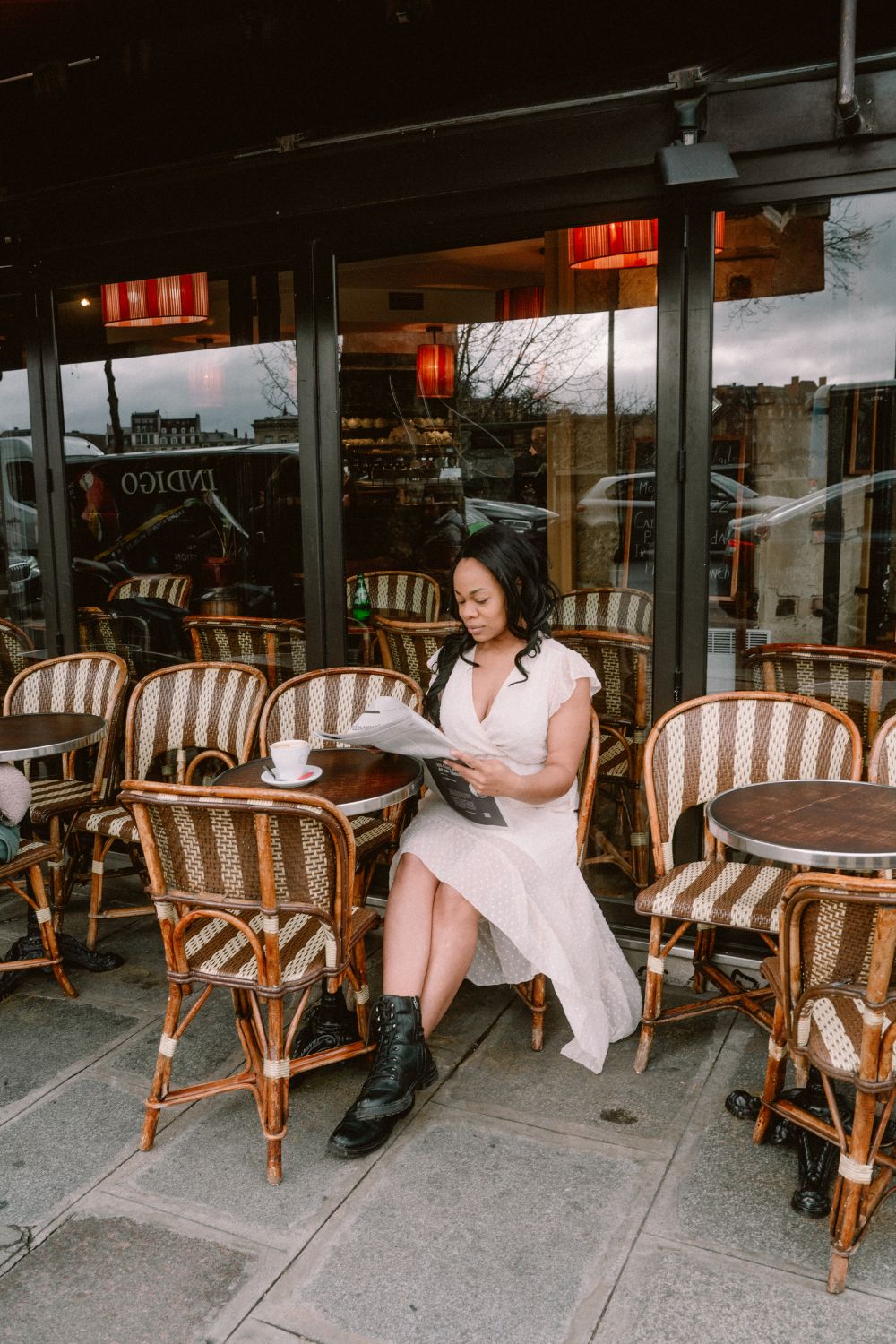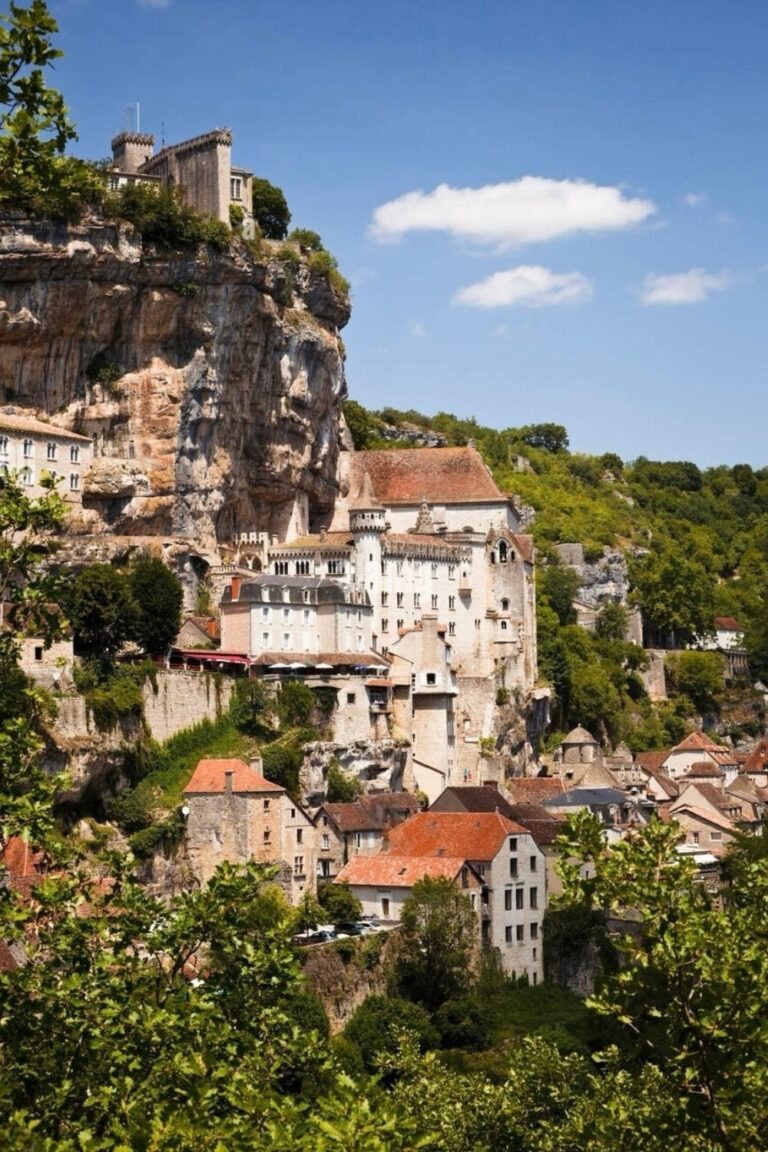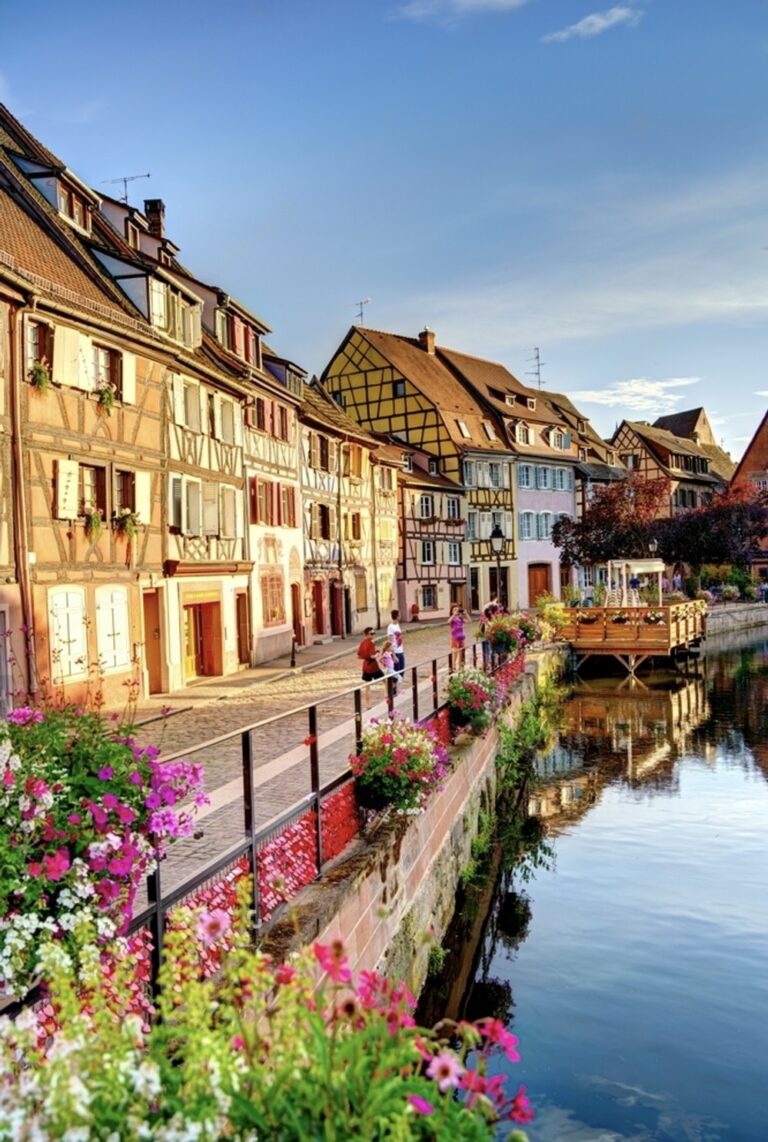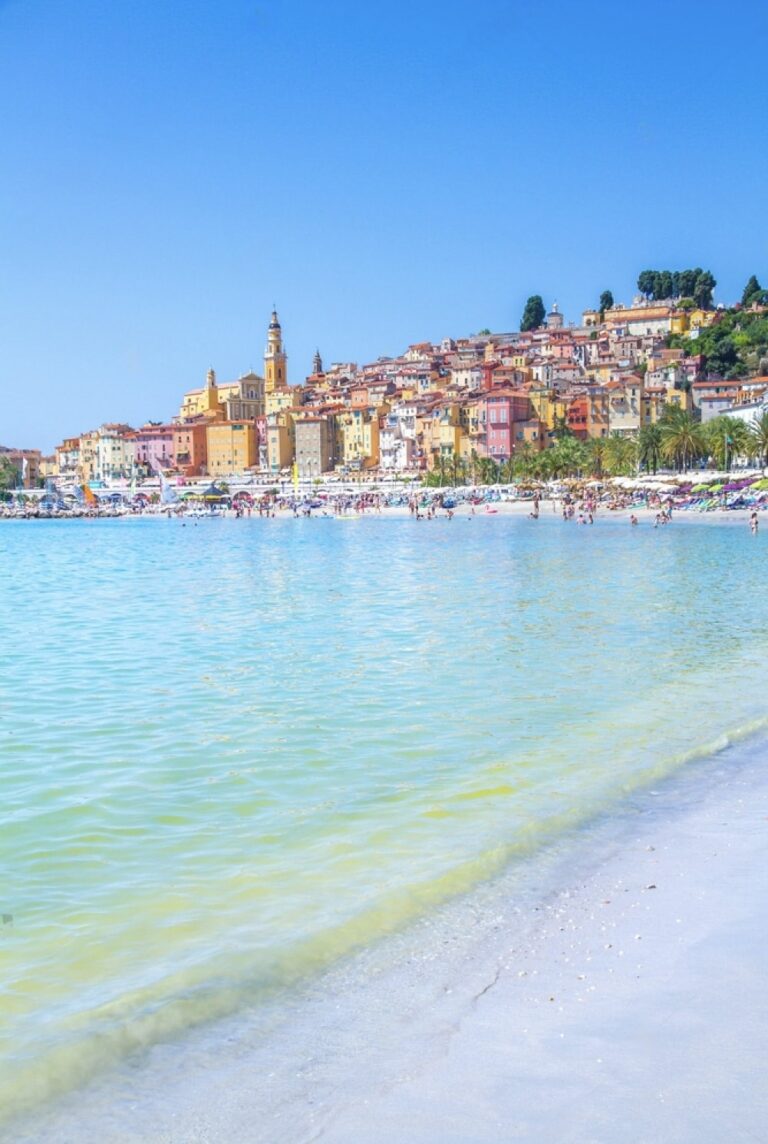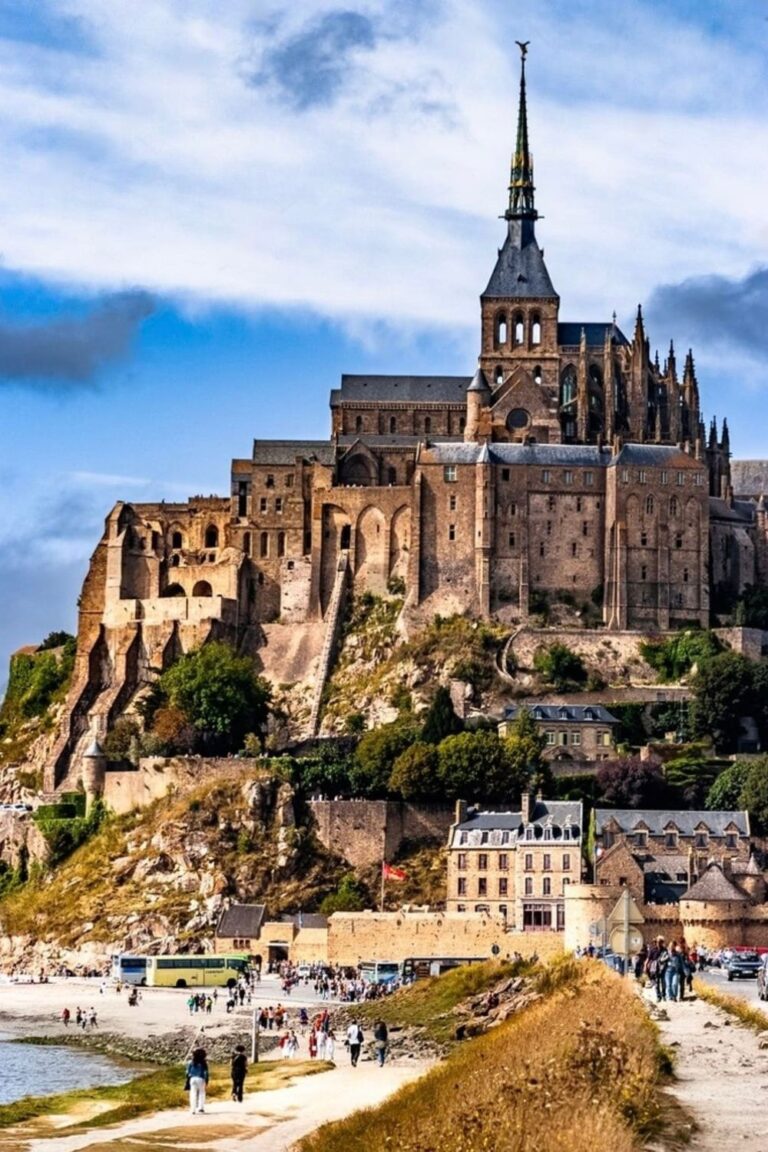11 Best Places to Visit in Alsace, France (By a Repeat Traveler)
Last Updated on April 19, 2025 by April Nicole

If you’re looking for the best places to visit in Alsace, you’re in the right spot. Since moving to Paris in 2021, I’ve explored a lot of France, and Alsace quickly became one of my favorite regions. It’s known for its colorful half-timbered towns, scenic wine routes, and a unique mix of French and German culture.
Planning a trip here can be a bit overwhelming, there’s so much to see and not everything is easy to reach. I’ve visited several times, most recently in September 2024, and this guide pulls together what I think are the must-see towns, hidden gems, and travel tips that actually help.
📌 Psst! This blog post contains affiliate links, which means I may earn a small commission if you book through them—at no extra cost to you! Merci! For full details, check out my Disclosure Policy.
📌 Plan Your Alsace Adventure
Ready to explore Alsace? Dive into our top picks for gear and experiences to help you make the most of your journey.
🧳 France Travel Essentials
-
Discover Cars
Rent a car at great rates to explore Alsace’s villages at your own pace.
-
Omio
Compare and book trains, buses, and flights across Europe with ease.
-
SimLocal
Stay connected with affordable data and voice plans for France—and get 5% off with code “DREAMING”.
🇫🇷 Top Alsace France Tours
-
Colmar Highlights Walking Tour & Wine Tasting
Wander through Colmar’s historic streets before savoring local wines at a family‑run vineyard.
-
Strasbourg City Center Bike Tour
Pedal along the Rhine and UNESCO-listed Grande Île, discovering Strasbourg’s landmarks on two wheels.
-
Dare to Alsace: Wine with a Feminine Touch
Taste curated selections of Alsatian wines guided by knowledgeable female vintners.
-
Highlights of Alsace Sightseeing Day Trip
Explore charming towns like Obernai and Kaysersberg on a full-day trip from Strasbourg.
-
Medieval Villages & Wine Tasting Day Trip
Explore picturesque medieval villages on this day trip along the Alsace wine route from Strasbourg.
places to visit in alsace
If you are in a hurry, here’s a summary of places to visit in Alsace:
Why Visit Alsace?
Alsace has a complicated history, and you can see it everywhere, in the architecture, the food, even the street signs. The region has bounced between France and Germany several times over the centuries, which is why it feels like a mix of both cultures.
Historical Background
Alsace used to be part of the Holy Roman Empire, later became French, then was taken by Germany, and finally returned to France after World War II. That back-and-forth shaped a lot of what you’ll experience when visiting especially in the buildings and local customs.
Cultural Highlights
People in Alsace are proud of their regional identity. You’ll still hear the Alsatian dialect in some villages, especially among older locals. Traditions run strong here from big events like Christmas markets and wine festivals to everyday things like signage in two languages or unique local dishes.
This cultural mix is part of what makes Alsace so different from other parts of France and part of why I keep going back.
Renting a Car vs. Taking the Train in Alsace
One of the easiest ways to explore Alsace, especially the smaller villages and vineyards is by car. I’ve used Discover Cars on multiple trips to compare rental rates in Strasbourg, Colmar, and Mulhouse. The roads are scenic, parking is usually easy, and you’ll have the freedom to stop wherever catches your eye. Just remember: most rentals are manual, so book early if you need an automatic.
If you’re sticking to the main towns like Strasbourg, Colmar, or Sélestat, trains are fast and reliable. I recommend Omio to search and book—it makes it easy to compare schedules across different rail companies in one place.
Both options work well, but if you want flexibility and access to the hidden gems, a car gives you more freedom to explore beyond the usual stops.
Map of Places to Visit in Alsace
A Google Map highlighting all towns, villages, castles, and hikes mentioned in this post. (You can download it for offline use, super helpful when navigating remote areas.)
Top 5 Must-See Towns in Alsace
Alsace is full of postcard-perfect towns, and honestly, it’s hard to pick just a few. I’ve visited most of the well-known ones, and each has its own vibe. Some are great for a quick visit, others are better if you want to stay overnight and slow down a bit.
Here are the towns I recommend the most, based on my own trips. I’ve also included a few tips for what to do, what to avoid, and how to get the best experience while you’re there.
1. Colmar
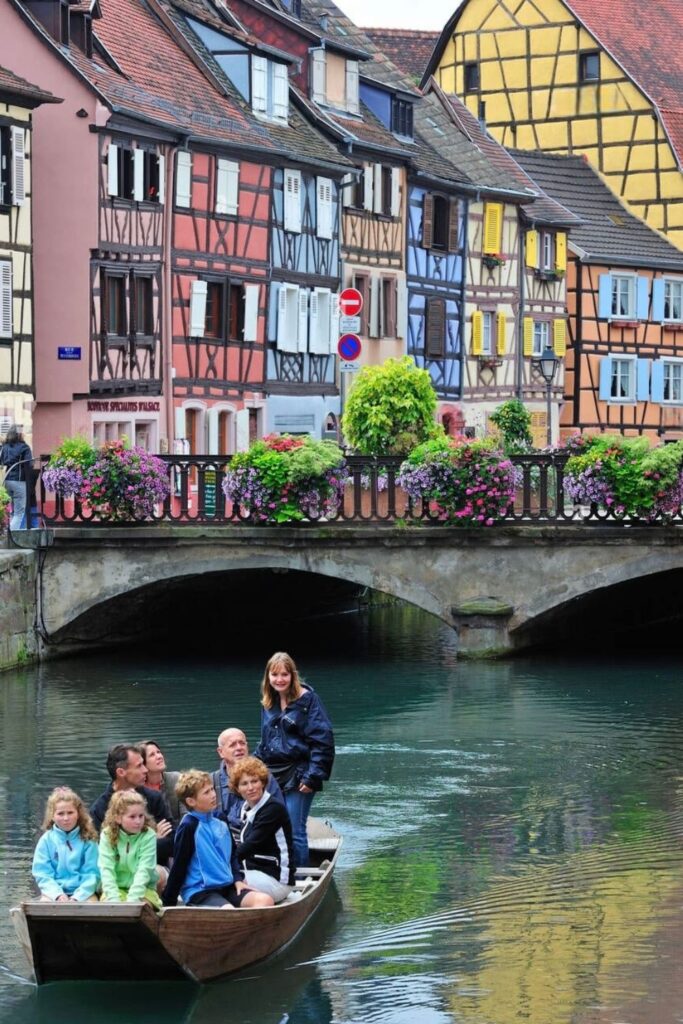
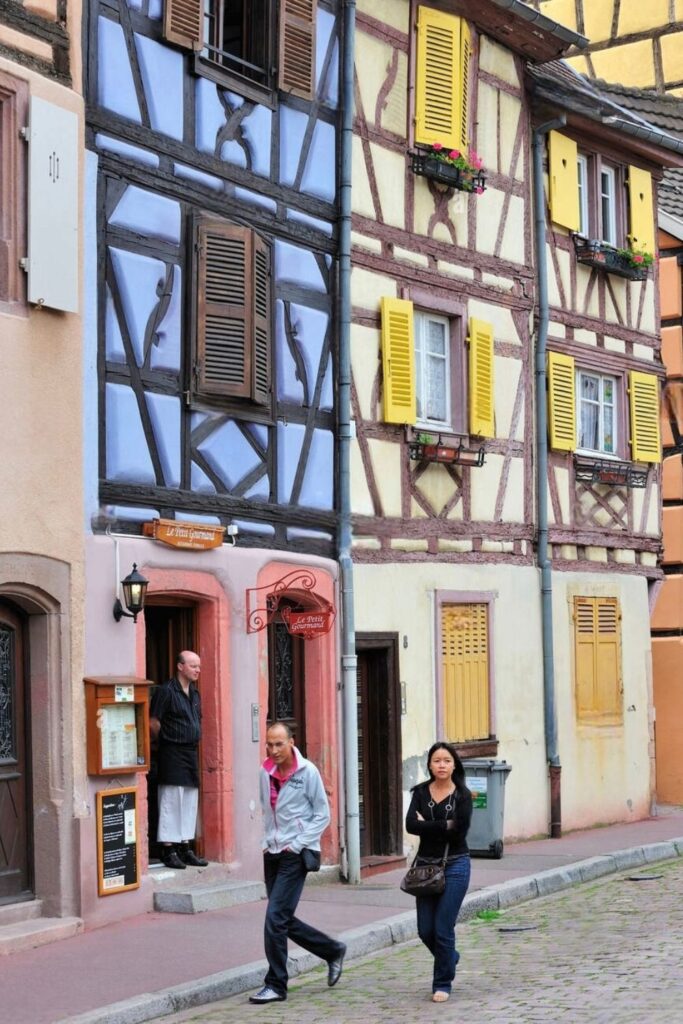
Colmar is often the first stop for travelers and it’s easy to see why. The canals in the old town reflect rows of half-timbered houses, giving it the nickname “Little Venice.” Beyond the visuals, Colmar also delivers great museums, cafés, wine bars, and shopping.
Why I Recommend It: It’s a great base if you want a mix of sightseeing, food, and wine. You don’t need a car to get around the center, and everything’s walkable.
Don’t Miss:
- Petite Venise canal district (ideal at sunrise or sunset)
- The Unterlinden Museum (home to the Isenheim Altarpiece)
- Covered Market Hall (grab lunch or Alsatian sweets)
- Little train tour of the old town (great overview in 30 mins)
💡 Pro Tip: Many day-trippers crowd Colmar midday. Stay overnight to enjoy the quiet mornings and magical evenings.
2. Eguisheim

Eguisheim is compact and circular, you can walk it in under an hour, but I recommend lingering. The concentric streets are lined with colorful homes, flower boxes, and wine cellars. When I visited during wine harvest, the energy in the village was electric.
Why I Recommend It: If you’re into wine, flowers, or just relaxed village vibes, this is the spot. It’s also a short drive or bike ride from Colmar, so it works well as a day trip.
Highlights:
- Local wine tastings at independent family wineries
- Flower competition history (it’s one of the most decorated villages in France)
- Visit the Chapel of Saint-Leon, a tiny gem in the heart of the village
📸 Instagram Tip: The “Rue du Rempart” outer ring is full of photogenic spots.
3. Riquewihr


Tried my very first bretzel in Alsace, and I still dream about that perfect sugar-coated bite!

Riquewihr is one of those places that instantly makes you slow down. Between the colorful houses, quiet little alleys, and vineyards wrapping around the town, it’s easy to see why people fall in love with it. I spent most of my time just walking, snacking on a warm pretzel, and stopping for wine tastings whenever something looked good. Go early or later in the day if you can, it’s much nicer without the crowds.
Why I Recommend It: If you like medieval architecture and wine, this town nails both. It’s a bit more touristy than some of the others, but still worth visiting especially if you go early or later in the day.
Must-See:
- Dolder Tower (a medieval gatehouse you can climb)
- Thieves’ Tower & Torture Chamber Museum
- Maison Zimmer for Alsatian wine tasting
🍷 Wine Lover Tip: Most wineries in Riquewihr offer tasting flights for €5–€10, often refundable with a bottle purchase.
4. Kaysersberg

Kaysersberg has a calm, easygoing vibe that’s perfect when you want a break from the busier towns. There’s a pretty river running through the center, quiet streets to wander, and a short hike up to castle ruins with amazing views. It’s a place that feels peaceful without trying too hard.
Why I Like It: It’s a good mix of history, scenery, and low-key vibes. Great for a slower travel day or an overnight stop if you want to avoid the bigger towns.
Top Things to Do:
- Walk up to Château de Kaysersberg (easy 10-minute climb with epic views)
- Visit Albert Schweitzer’s birthplace & museum
- Sample local pastries at Pâtisserie Gilg, chef’s kiss!
🎄 Holiday Travel Tip: Kaysersberg’s Christmas market is small but stunning, with handmade crafts and fewer crowds.
5. Ribeauvillé


Ribeauvillé feels effortlessly charming, with flower-covered houses, little cafés, and mountains peeking out behind the rooftops. I spent a morning here walking the main street, ducking into wine shops, and watching storks nesting on chimneys. If you’re up for a bit of a climb, the hike to the nearby castle ruins is totally worth it for the views. It’s a great mix of cute village energy and a little adventure on the side.
Why It’s Worth a Stop: You get the best of both worlds, pretty streets to wander and trails that lead straight into the hills. Great if you want to balance wine tasting with a bit of activity.
What to Explore:
- Grand Rue (main street with shops, cafés, and stork nests!)
- Château Saint-Ulrich + Girsberg + Haut-Ribeaupierre trail loop
- Local distillery stops for fruit brandy (like kirsch)
Hiking Tip: Start early and wear decent shoes, this hike offers 360° views over the Rhine plain.
The Alsace Wine Route: Best Villages & Stops
The Alsace Wine Route is legendary and it’s easy to see why. Stretching from Marlenheim to Thann, this 170-kilometer route passes through more than 70 picturesque wine villages. Whether you’re a wine newbie or a full-on oenophile, there’s something here for you.


If you’re not driving, consider joining a small-group Alsace wine tour from Colmar or Strasbourg—it’s a fun and informative way to visit multiple villages without the hassle.
Recommended Stops:
- Mittelbergheim: Really chill and less touristy. I did a tasting at Domaine Gilg, great Riesling and friendly people.
- Turckheim: Offers everything from hiking to hearty food. The night watchman’s tour is a quirky tradition.
- Barr: Smaller crowds, solid wines. The Alsace Wine Museum here gives you a good overview of the region’s wine history.
Unique Wine Experiences:
- Harvest Day (Sept–Oct): Some winemakers let you join in on harvest activities. I did this once and ended up helping with grape sorting, messy but fun.
- Try Crémant d’Alsace: It’s the local sparkling wine, and honestly a great deal. Light, refreshing, and often under €10 a bottle.
- Attend a wine festival: Turckheim, Eguisheim, and Obernai have great ones in summer.
Hidden Gems in Alsace You’ll Want to See
While towns like Colmar and Riquewihr steal the spotlight, Alsace is full of underrated villages, castles, trails, and cultural stops that many travelers miss. These hidden gems offer peaceful vibes, authentic experiences, and a deeper look at the region’s character.
1. Bergheim

Often overshadowed by nearby Ribeauvillé, Bergheim is a flower-filled medieval village that still feels wonderfully local. You won’t find crowds here, but you will find beautifully preserved ramparts, inviting wine cellars, and quiet backstreets perfect for a relaxed afternoon stroll.
Why I Liked It: It feels more local and less polished than the big-name towns, but in a good way. When I visited, it was quiet, colorful, and super walkable, no crowds, just a few locals tending their flower boxes.
Why It’s Special:
- Town Walls: One of the only villages in Alsace with its medieval walls still completely intact. You can walk a loop and get nice views of the village and vineyards.
- The self-guided wine trail around the village is charming and offers free tastings.
- I met a winemaker here who poured samples straight from the barrel while his dog napped in the corner, it was that kind of day.
💡 Tip: Go on a weekday morning if you can. It was nearly empty when I went, which made it feel like I had the place to myself.
2. Château du Haut-Koenigsbourg

While not exactly a secret, this massive fortress is often skipped in favor of nearby towns. That’s a mistake, Haut-Koenigsbourg is one of the best-preserved castles in France and offers sweeping views of the Vosges and Rhine Valley.
What to Expect:
- Restored Rooms & Halls: You walk through weapon displays, old kitchens, a library, and towers. It’s self-guided, but the signage is helpful.
- Panoramic Views: On a clear day, you can see across the Rhine and even into Germany.
- Kid-Friendly: Lots of space to explore, and kids seemed to love the drawbridges and cannon towers when I was there.
🎫 Practical Info: Entry is around €9. Arrive before 11 AM or after 3 PM to avoid the tour bus crowds.
3. Château Saint-Ulrich & the Ribeauvillé Castle Hike

From the edge of Ribeauvillé, a well-marked hiking trail leads to three ruined castles perched above the vineyards. It’s a moderate hike and an unforgettable way to combine nature, history, and views.
Hike Highlights:
- Château Saint-Ulrich: The biggest and easiest to access, it has multiple rooms you can actually walk through.
- Château Girsberg: A bit smaller, built into the rock, I stopped here for a quick snack break.
- Château Haut-Ribeaupierre: The highest of the three and a bit of a steeper climb, but the view is solid if you’re up for it.
Hiking Tip: Plan for about 2–3 hours round trip. Wear real shoes (not sandals), bring water, and watch your footing, some parts are a little rocky. It’s not technical, just uphill in places.
4. Neuf-Brisach

A true hidden UNESCO World Heritage Site, Neuf-Brisach is a fortified town built by Louis XIV’s architect Vauban. It’s designed in a perfect octagon, complete with ramparts, gates, and a symmetrical street layout.
Why It’s Worth Visiting:
- Walk the Walls: You can walk a full loop along the top of the ramparts and get good views of both the town and surrounding countryside.
- Check Out the Gates: Each entry point into the town has a different style, they’re worth a quick look if you’re driving in.
- UNESCO Site: It’s not flashy, but it’s on the World Heritage list for a reason.
Nearby Bonus Stop: Pair it with a trip across the border to Breisach-am-Rhein in Germany, it’s less than 15 minutes away and makes a fun cross-border afternoon.
5. Route Romane d’Alsace

This thematic route takes you to Romanesque churches and monasteries scattered throughout the countryside. It’s perfect for travelers who want to go slow, discover architectural gems, and experience the peaceful side of Alsace.
Why I Liked It: I didn’t hit every stop, but the ones I visited were peaceful and almost empty, perfect for getting a break from the busier towns. Plus, the drive between them takes you through some pretty countryside.
Top Stops Include:
- Église Saints-Pierre-et-Paul in Rosheim: Compact, detailed carvings, and easy to find. Took about 15 minutes to explore.
- Abbaye d’Andlau: Quiet, tree-lined location, great place to stretch your legs and take a breather.
- Marmoutier Abbey: A bit more dramatic, with a big organ and a mix of Romanesque and Gothic design.
How to Explore: This is definitely a “rent a car and wander” kind of route. It’s not crowded, so you can take your time. I packed some snacks, made a loose plan, and just hit a few in one afternoon, very chill day.
6. Hunawihr

Tiny and quiet, Hunawihr is surrounded by vineyards and has a peaceful, spiritual atmosphere. The main landmark is its hilltop fortified church, overlooking the vines. The town is also home to a butterfly garden and stork sanctuary, making it great for families or nature lovers.
Best For:
- Fortified Church: It’s up on a hill and overlooks the vineyards. I went up there mid-morning and it was dead quiet, great views, no crowds.
- Butterfly Garden + Stork Sanctuary: If you’re traveling with kids (or just like animals), this is a fun and unexpected combo.
- Walking Paths: There’s a vineyard trail just outside the village that makes for a nice, easy walk. I packed a snack and hung out by the vines for a bit.
Pro Tip: Bring a light lunch and make it a picnic stop. It’s not a “spend all day” destination, but a great spot to slow down for an hour or two.
What to Eat & Drink in Alsace
Alsace is a dream destination for foodies. The region’s cuisine reflects its blended French and German heritage, hearty, flavorful, and often paired with a glass of local wine. From rustic mountain casseroles to Michelin-starred reinventions, here’s how to eat your way through Alsace.
Classic Alsatian Dishes You Have to Try
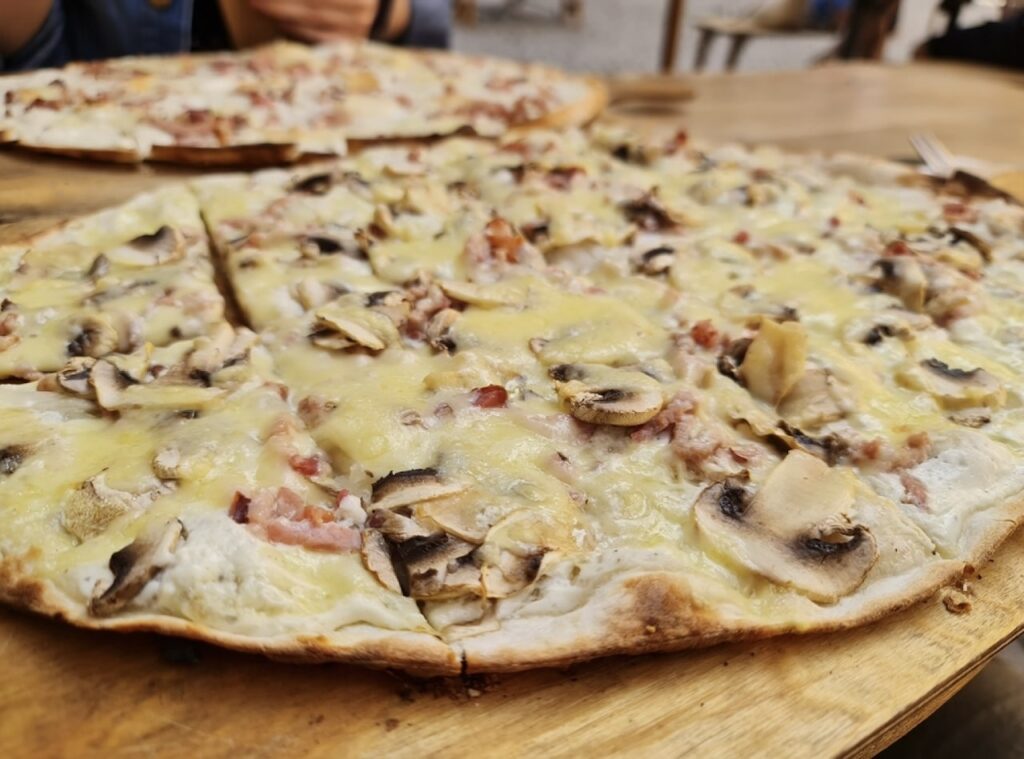


- Tarte flambée (Flammekueche): Crispy flatbread with cream, onions, and bacon. Try it sweet with apples too.
- Choucroute garnie: Sauerkraut piled with sausages and smoked meats, the ultimate hearty meal.
- Baeckeoffe: A slow-cooked casserole of meats, potatoes, and wine.
- Coq au Riesling: Chicken in creamy wine sauce with mushrooms.
- Munster cheese: Pungent and flavorful, best with bread and a glass of Pinot Gris.
👉 Best spots: Winstub du Sommelier (Bergheim), Caveau Morakopf (Niedermorschwihr), or local taverns in Eguisheim and Kaysersberg.
Sweet Treats & Desserts
- Kougelhopf: A bundt-shaped brioche with raisins, great for breakfast.
- Bredele: Mini spiced Christmas cookies, buy tins at markets.
- Pain d’épices: Honey-spiced gingerbread loaf, especially during the holidays.
Tip: If you’re visiting during the holidays, stock up, most of these treats are seasonal and don’t hang around outside of fall/winter.
Alsatian Wines You Shouldn’t Miss
Alsace produces mostly white wines, thanks to its dry climate and sun-drenched hillsides. The wines are aromatic, crisp, and food-friendly, a perfect match for the region’s rich dishes.
- Riesling: Dry and crisp, perfect with sauerkraut or fish.
- Gewürztraminer: Floral and spicy, great with strong cheese or foie gras.
- Pinot Gris & Sylvaner: Food-friendly and easy drinking.
- Crémant d’Alsace: Affordable sparkling wine (like Champagne, but local).
Try tastings at: Domaine Weinbach (Kaysersberg), Cave de Turckheim, Domaine Paul Blanck (Kientzheim)
Where to Eat in Alsace
- Winstubs: Traditional taverns serving big portions and local wines. Try Winstub Le Clou (Strasbourg) or Winstub La Dime (Obernai).
- Markets: Grab cheese, bread, and charcuterie for a vineyard picnic. Colmar and Ribeauvillé have excellent weekly markets.
- Michelin Magic: For fine dining, book JY’s (Colmar) or Le Chambard (Kaysersberg) surprisingly affordable lunch menus available.
food Tips
- The plat du jour (daily special) is usually the best value at lunch.
- Ask for local wine pairings, most places have good house wines.
- In winter, grab a cup of vin chaud (mulled wine) at a market, it’s everywhere and usually around €2
Alsace Christmas Markets
The Christmas markets of Alsace are among the most magical and celebrated in Europe, drawing visitors from around the world to experience their enchanting ambiance. These markets, with their rich history, festive decorations, and diverse offerings, transform the charming villages and towns of Alsace into winter wonderlands.
Whether you’re looking for unique gifts, delicious holiday treats, or simply to soak in the festive spirit, the Christmas markets of Alsace provide an unforgettable holiday experience. Places to Visit in Alsace
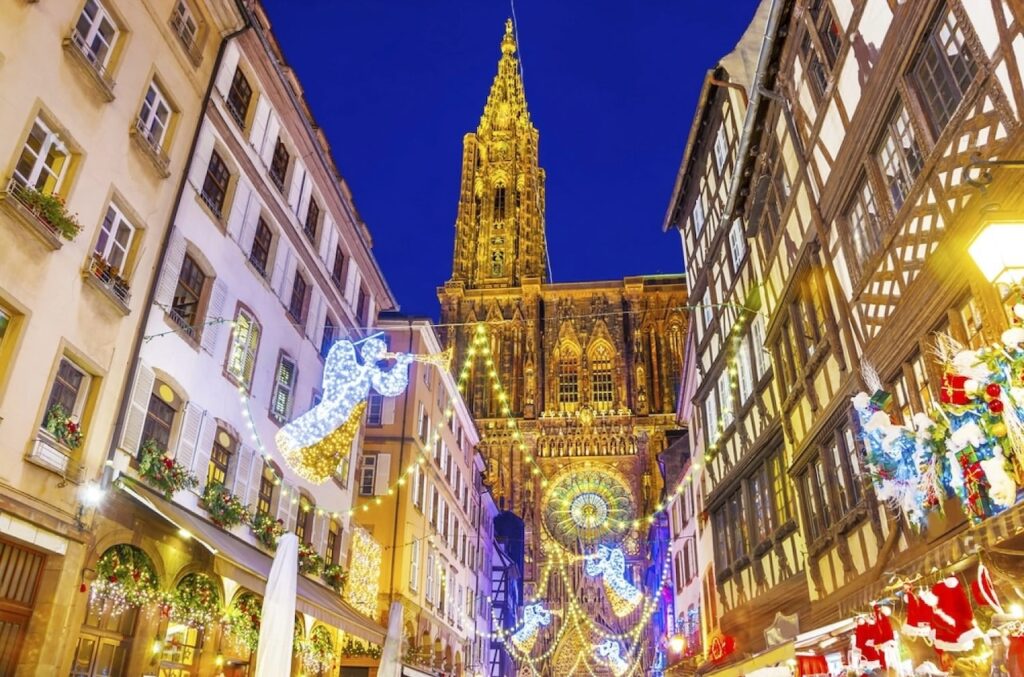
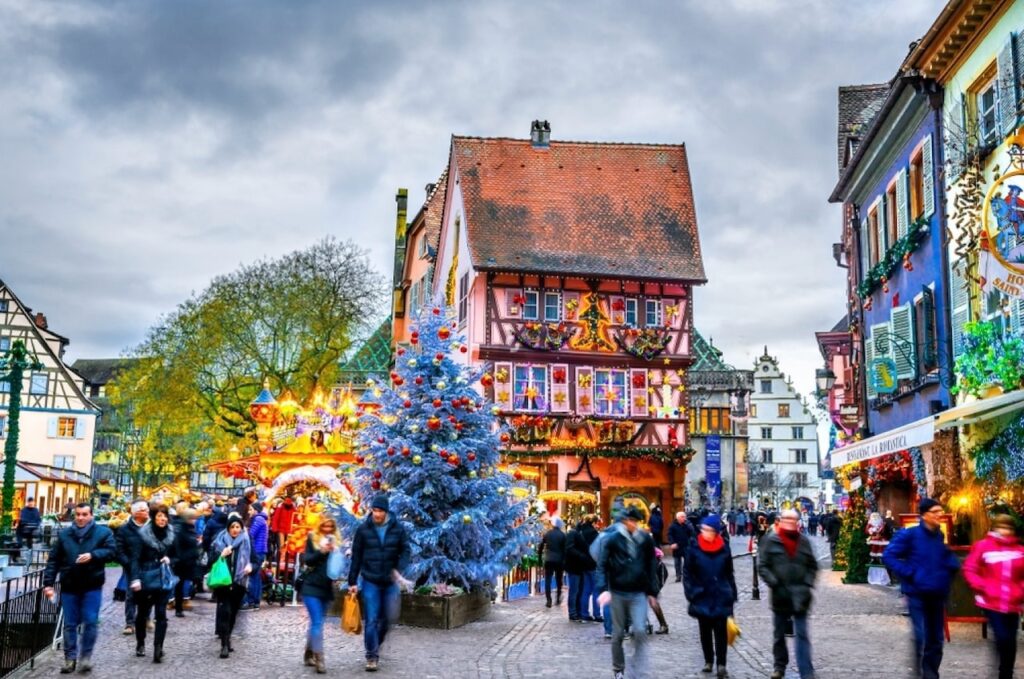
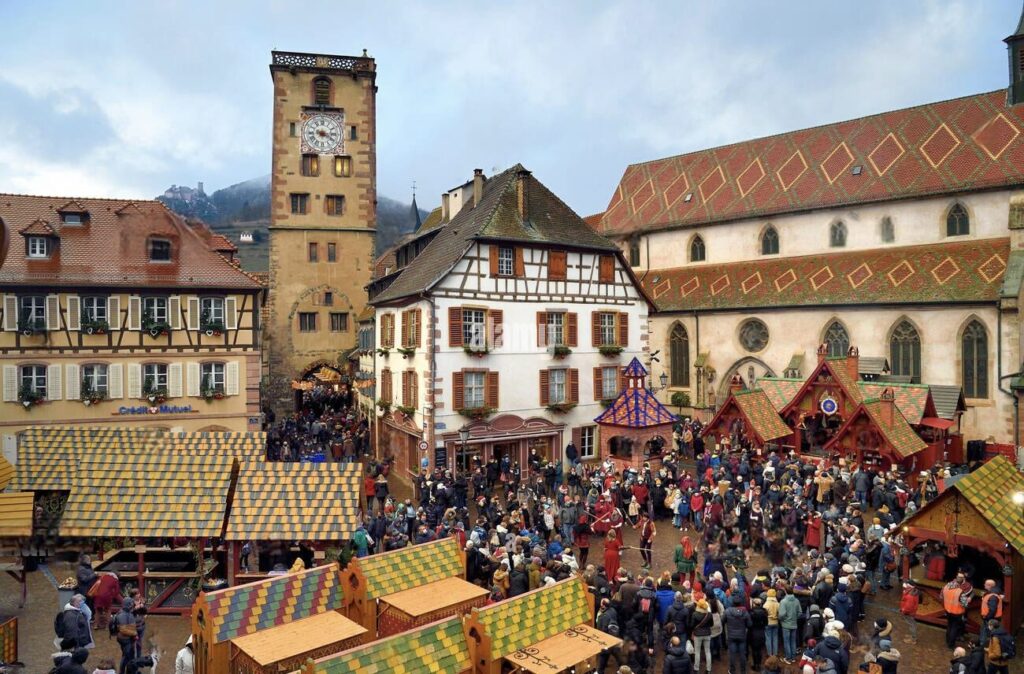
Best Markets to Visit
- Strasbourg: Known as the “Capital of Christmas,” Strasbourg’s market is one of the oldest and most famous in Europe. The entire city is beautifully decorated, creating a magical atmosphere.
- Colmar: Colmar’s Christmas market is smaller but equally enchanting. The town’s medieval architecture adds to the festive charm.
- Ribeauvillé: This market has a medieval theme, complete with costumed performers and traditional crafts.
Tips for Enjoying the Markets
- Plan Ahead: The markets can get crowded, especially on weekends. Visit early in the day or during weekdays for a more relaxed experience. Places to Visit in Alsace
- Dress Warmly: Alsace can be chilly in winter. Layer up and wear comfortable shoes.
- Sample Local Delicacies: Try seasonal treats like bredele (Christmas cookies) and vin chaud (mulled wine).
3-Day Alsace Itinerary
If you’re short on time but want to see the best of Alsace, three days is enough to cover the highlights especially if you have a car. Here’s a basic itinerary I’ve followed (with a few tweaks depending on the season or vibe).
Day 1 – Fairytale Towns
- Morning: Start in Colmar. Walk the old town, grab a coffee, check out the market and maybe the Unterlinden Museum.
- Afternoon: Head to Eguisheim, it’s about a 15-minute drive. Do a wine tasting, explore the circular streets, and relax with dinner in the village.
- Overnight: Colmar or Eguisheim (both work as a base).
Day 2 – Wine Route Drive
- Morning: Hit the Alsace Wine Route. Drive from Turckheim to Riquewihr, with stops in Mittelbergheim and Barr if you have time.
- Optional: Detour to Château du Haut-Koenigsbourg, budget 1.5 to 2 hours.
- Overnight: I usually stay in Ribeauvillé or Kaysersberg for a quieter evening.
Day 3 – Castles + Culture
- Morning: Hike to Château Saint-Ulrich from Ribeauvillé. Takes about 2–3 hours round trip.
- Afternoon: Explore Kaysersberg, grab a pastry, visit the old town or museum.
- Optional Stop: If you’re into architecture, swing by a Romanesque chapel on your way out.
- Evening: Wrap up with dinner and local wine, or drive to Strasbourg if that’s your next stop or departure city.
Getting Around Alsace
I’ve done Alsace both with and without a car and honestly, having a rental makes a big difference if you want to visit smaller villages or go at your own pace.
🚗 By Car:
- Easiest way to explore the wine route, remote castles, and lesser-known towns.
- Roads are in great shape, and parking is usually free or cheap outside big cities.
- Most rentals are manual, so if you need an automatic, book ahead especially in high season.
- You can pick up a car in Strasbourg, Colmar, or Mulhouse, I usually compare prices using platforms like Discover Cars.
🚆 By Train:
- Works well if you’re sticking to the bigger towns (like Strasbourg, Colmar, Mulhouse, Sélestat).
- Regional trains are reliable and easy to book through Omio.
- Downsides: trains won’t get you to smaller villages or into the hills so your options are limited without a car.
🚌 By Bus:
- Some regional buses connect towns like Colmar to Eguisheim or Sélestat to Haut-Koenigsbourg (especially in summer).
- They’re fine for short hops but not super frequent double-check schedules on the Busbud network.
🚴 By Bike:
- The terrain’s pretty flat and there are dedicated vineyard bike trails between towns like Turckheim, Eguisheim, and Colmar.
- E-bikes are a good option if you want to cover more ground without breaking a sweat.
- I’ve rented bikes directly from Colmar and Turckheim without any issues.
📍 Don’t forget to click on the interactive map here to see all the top places to visit in Alsace, pinned and ready to explore.
Final Thoughts on the Best Places to Visit in Alsace
Alsace is one of those regions that really sticks with you — not just because it’s beautiful, but because it’s so easy to enjoy. Whether you’re into wine, food, hiking, or just walking through charming towns, there’s something here for pretty much everyone.
I hope this guide helps you plan your trip and makes it easier to decide where to go and what to skip. Safe travels, and if you have questions — feel free to reach out!

